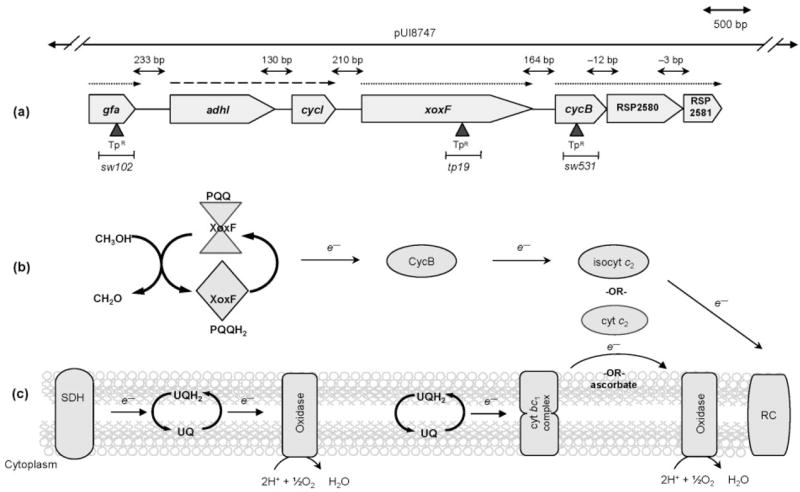Fig. 1.

Succinate and methanol oxidation by R. sphaeroides. (a) Shown is the direction of gene transcription (arrowhead) and the intergenic distances within this region of the R. sphaeroides genome. Trimethoprim (TpR) cartridge insertion is indicated by ▲; the extent of wild-type DNA in cosmid pUI8747 is shown above the map. Known operons are shown by a dashed arrow (Barber et al., 1996; Rott et al., 1993), whereas dotted arrows show potential operons (Y. Dufour, personal communication). (b) Periplasmic oxidation of methanol to formaldehyde results in the concomitant transfer of electrons to CycB and to isocyt c2, and the reduction of O2 by a terminal cytochrome oxidase. Alternatively, under photosynthetic conditions, electrons can be transferred to RC complexes in the membrane. (c) During succinate-dependent respiration, succinate dehydrogenase (SDH) reduces ubiquinone (UQH2) via a terminal quinol oxidase. Alternatively, electrons from quinone can pass through cyt bc1, then to periplasmic cytochromes such as isocyt c2, and finally onto membrane-bound cytochrome oxidase to reduce O2.
